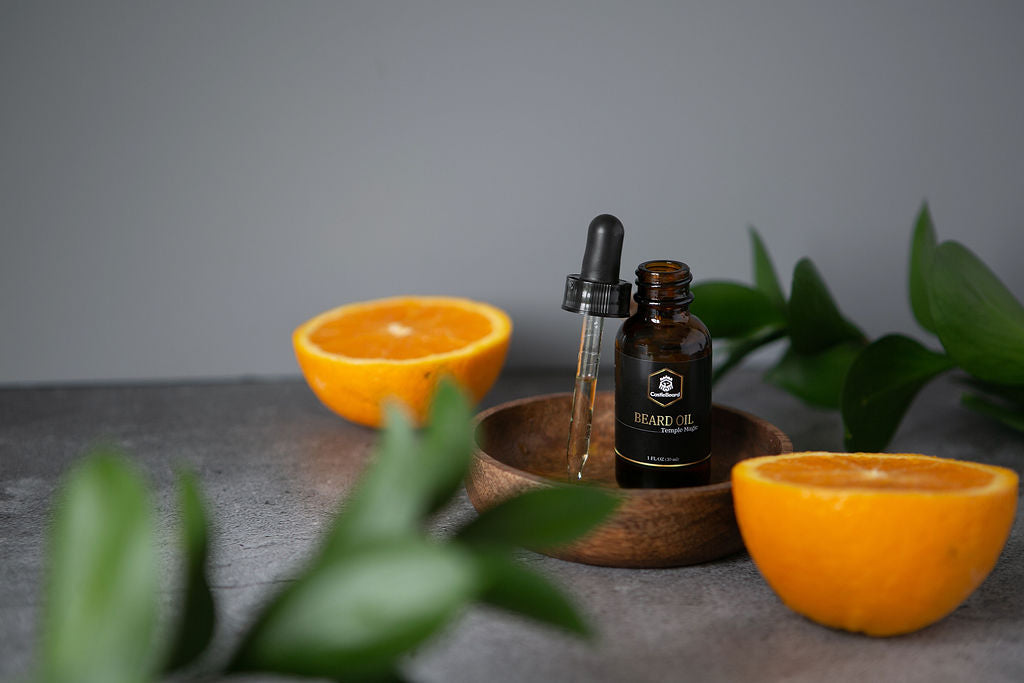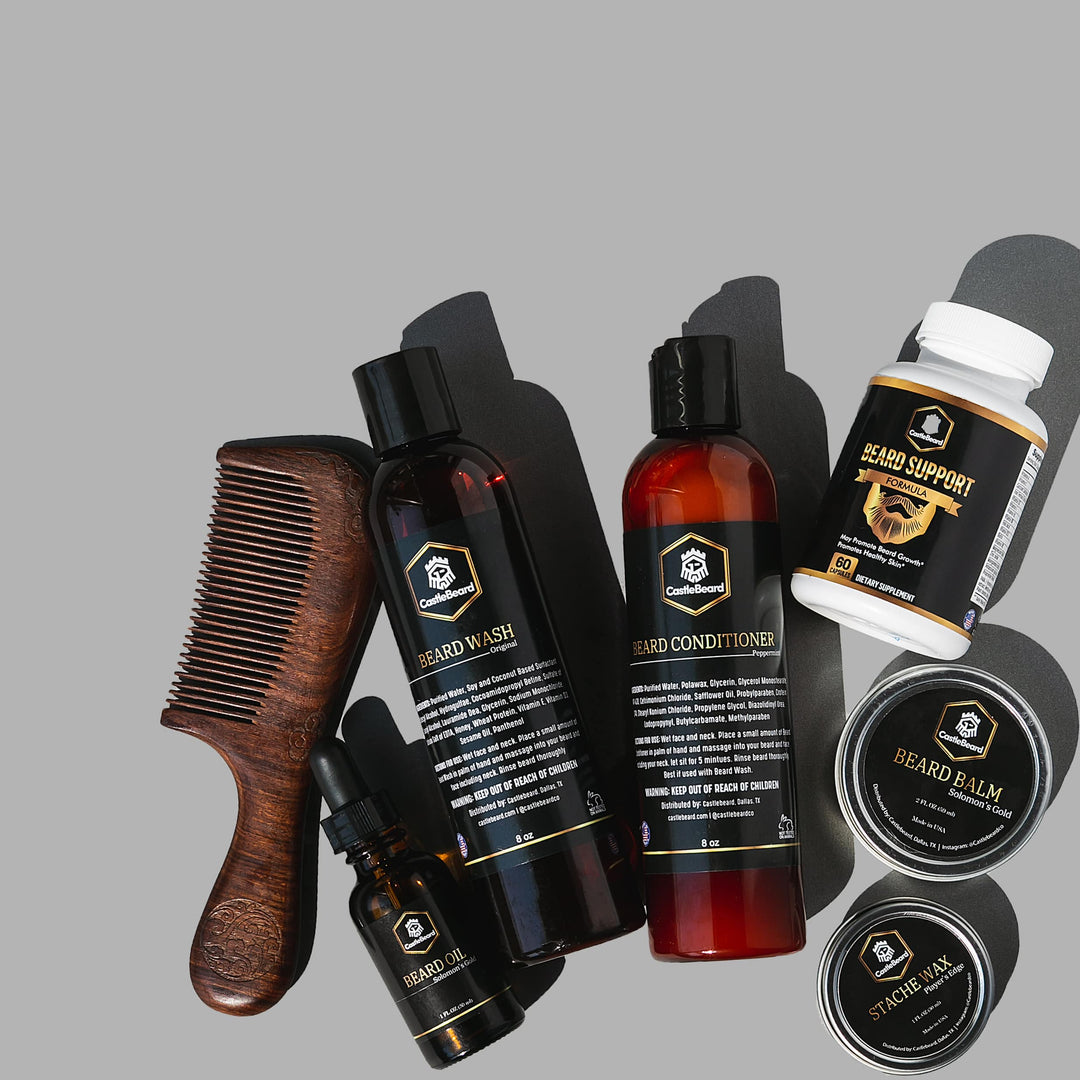Scent is powerful. We gather impressions about the people around us based on scent, and perfumes and scented oils have been a part of almost every human society for millennia. So when it comes to something you plan to use daily, such as an all-natural beard oil, you want it to do more than just smell good.
But how do you choose the best scent for your beard oil? There are a few technical aspects to look at, as well as some psychological ones. Let’s get down to it!

The Chemistry of Fragrance
To start the process of making the right choice in your all-natural beard oil, it’s a good idea to understand the chemistry behind fragrances. It’s a very big, very complicated topic in general, but the basics are easy to understand. There are two main topics in the chemistry of fragrance to understand: the layering of scents and fragrance families.
Good Scents Have Layers
The best perfumes and colognes in the world aren’t just one scent: they’re several scents, blended and layered together. The most basic building blocks of fragrances are the three essential layers of scent notes: top, middle, and base. All three elements are necessary to build a well-rounded, balanced fragrance that lasts.
Top: Top notes, also known as head notes, are the first thing you smell in any scented product. They’re typically short-acting, and usually characterized by a “bright” or sharp smell. Examples include citrusy (bergamot, lemon, grapefruit, orange) scents, grassy or herby (spearmint, coriander, basil) scents, and certain light, floral scents, like lavender and rose. Take note that even men’s fragrances can have floral top notes while still smelling very masculine.
Middle: Middle notes, also known as heart notes, rise to the fore just as the top notes begin to dissipate. They last a little bit longer and tend to smooth the edges of the base notes in a fragrance, blending the sharp and bright top notes with the heavier, longer-lasting notes. Common middle notes in fragrances for beard oils and other self-care products include scents like cinnamon, ginger, pepper, cardamom, jasmine, and lemongrass.
Base: If top notes are the head and middle notes are the heart of a fragrance, base notes are the soul. Typically, base notes last the longest--six hours or longer--and are made up of heavier, richer scents that harmonize with the top and middle notes to create a smooth, lasting scent. Classic examples from colognes and perfumes include vanilla, amber, musk, patchouli, sandalwood, and cedar. Most base notes are derived from woody and resinous sources; in their raw state, they may have a texture like sap, and some are almost like pebbles.

Know Your Fragrance Families
After the basic concept of layering of scents, the system of fragrance families is the second most important thing to understand to identify the best beard oils on the market. Fragrance families are quite simply groups of scents that share a common theme--they help the people who make scented products put their fragrance into a category. It's a bit like finding the right section in the bookstore for that new best-seller. Fragrance families can get fairly particular, but there are a few popular base families you definitely want to keep in mind.
Floral: This is the family for all the scents that we associate with flowers, and while they definitely play a bigger role in women’s fragrances and perfumes, they assuredly have a place in products for men, too. Floral scents can have a “green” smell, like violet, or a sharp scent like ylang-ylang or lily of the valley.
Woody: Woody scents are some of the most popular for men’s fragrances, and are made up of the scents that remind us of forests: cypress, cedar, frankincense, vetiver, sandalwood, and so on. You’ll notice that most of the woody fragrance family comes from trees, although patchouli is actually from a plant in the same family as mint. Our sharpest woody scent is Solomon's Gold.
Citrus: Whenever something has a refreshing scent, the fragrance is usually heavy on citrus-family components. Bergamot, mandarin, lemon, and grapefruit are the major players in this fragrance family, and in beard oils they give a bright counterpoint to the rest of the scent, leaving your beard smelling fresh and clean.
Oriental: The name of this fragrance family is a little old-fashioned, but it comes from the long history of perfumes and scented body products itself. Oriental scents are rich, complex, often smoky, and sweet and spicy. Scents like black pepper, cinnamon, musk, vanilla, and amber all fall into the oriental family.

Choosing The Scent That Fits You
Now that you know the basics of fragrance chemistry, choosing the right beard oil comes down to the impression you want to create and how to choose the scent that will do that for you. The different fragrance families all create different impressions, and you definitely want to choose something that speaks to you--and that tells the people around you what you want them to know.
Our Texas Angel beard oil, for example, has a decadent, spicy blend of ginger, sage, cedar, pepper, redwood, and patchouli, evoking intensity and confidence. The heady richness of cedar and amber will linger for hours, evoking the strength of the trees they come from. The spicy notes of ginger and black pepper add a layer of mystery and warmth, and the basil and sage lend pungent sharpness.

On the other hand, our Blue Bloods all-natural beard oil has a rich, sweet warmth that draws people in: vanilla bean, tobacco absolute, rose absolute, and labdanum blend together into a welcoming cloud, while mandarin and sage cut through the sweetness to give the scent just enough sharpness and character to make it truly masculine.
When choosing the highest quality beard oil, you want to make sure you’re taking the scent into consideration as much as the base oils and what they’ll do for your skin and beard. By understanding a little bit of the chemistry behind fragrance and the psychology that goes along with scent, you can make your choice knowing that you’ll leave a lasting good impression on everyone you encounter.








Leave a comment